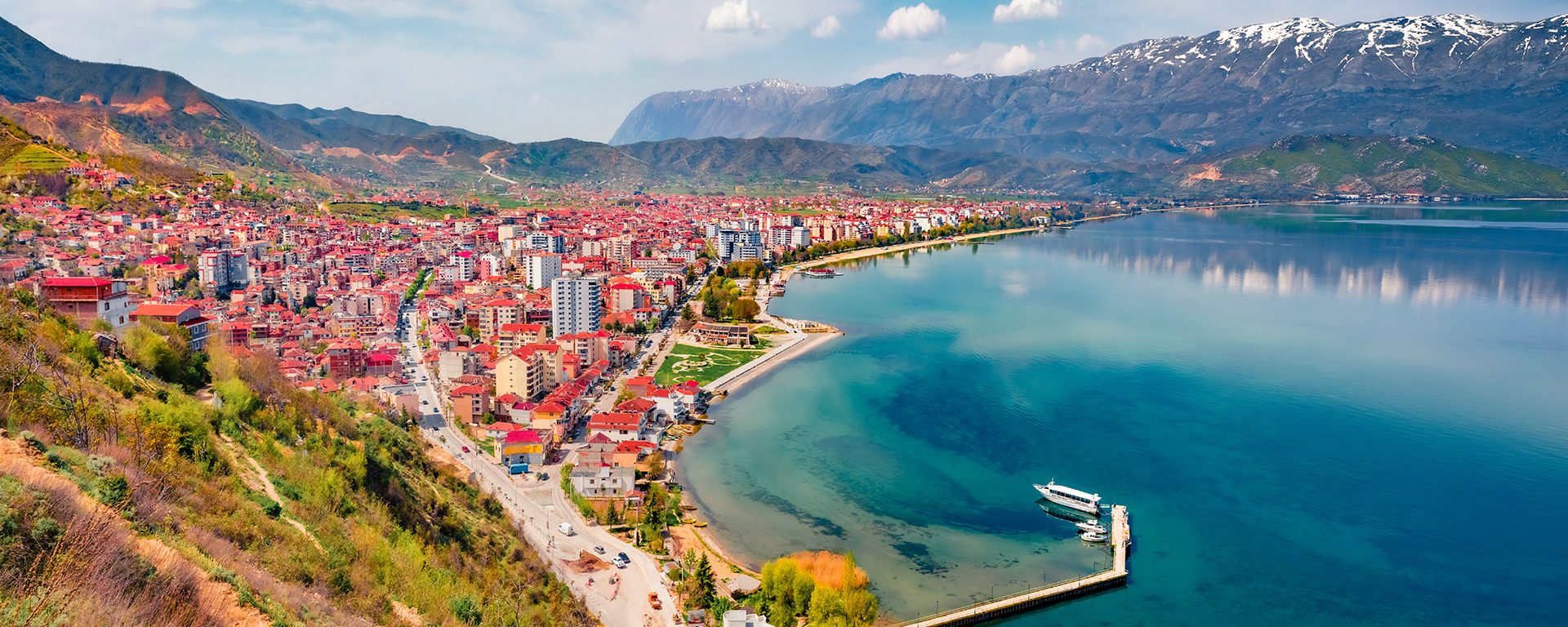The picturesque village of Lin in Pogradec, Albania has been declared an “Urban Architectural Ensemble”, now included in the UNESCO World Heritage Site list.
This new status for Lin, located on the shores of Lake Ohrid, recognizes the unique natural landscape that combines cultural and natural heritage, traditional urban planning with cobblestone alleys and community coexistence, as well as unique architecture adapted to the local climate and resources.
Lini remains one of the most beautiful destinations in Albania, which demonstrates the close connection between man, tradition and nature on the shores of the oldest lake in Europe.
Following recent underground and underwater archaeological discoveries, it has been confirmed that the oldest palatial settlement in Europe is located there, dating back 8,000 years.
One of Lin’s most precious treasures remains the ruins of a paleo-Christian basilica, discovered on the top of the hill that rises above the village. Also, archaeological excavations in recent years have uncovered an ancient church, dating back to the 5th–6th centuries AD.
This church is notable for its magnificent mosaics, adorned with geometric motifs and symbols of the Christian faith. Their exceptional preservation indicates that an important religious and cultural center once existed there, reflecting the high artistic and spiritual level of that time.
Researchers from Albania, Switzerland and elsewhere have carefully documented every element to reconstruct the early lives of the inhabitants. Meanwhile, the village itself, with its stone houses and cobblestone streets, retains a magic that makes it unique for visitors, who come in increasing numbers year after year, turning Lin into a diverse tourist attraction in the country.
Ancient Lin settlement reveals how farming spread to Europe
A settlement of around 30-40 houses, built with oak, pine, and large juniper trees, and home to approximately 400-800 people, is shedding light on how society transitioned from hunter-gatherers to farmers. Inhabited between 6200 BC and 4000 BC and located in Lin, Pogradec, this site is revealing how people lived around 8,000 years ago in Neolithic lake dwellings known as palafittes. A Swiss-Albanian archaeological expedition has confirmed that the site is one of Europe’s oldest lakeside settlements. It is also one of the first places where agriculture spread to Europe from the Near East, initially through the Mediterranean and then northward across the continent.
The head of the project, Professor Albert Hafner from the University of Bern, explains that this does not mean the site was continuously inhabited for 2,000 years. Instead, several villages were built at this location over time. “The population used about 300 trees to construct the settlement, which amounts to an entire forest. The main aim of the project is to understand how agriculture developed. Organic layers in wetland archaeological sites preserve materials much better, providing crucial information about how agriculture spread to Europe. We are tracing a pivotal moment in this transition,” he says, as his team continues an underwater excavation in Lake Ohrid near Pogradec.
The research is funded by the European Union under the EXPLO project, which aims to explore the dynamics and causes of prehistoric land use changes in the cradle of European farming.

